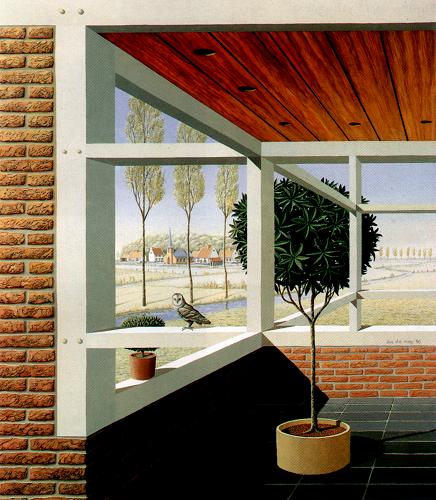Learning Outcomes:
The students will explore the levels of acting within Hamlet through creating a piece of art that encompasses this theme.
Materials:
- paper
- colored pencils, markers, erasers, pencils, and pens
- paints and brushes
Lesson Guideline:
Cover the different levels of acting throughout this play, including:
- the play within the play (the actual stage actors)
- Hamlet's play of madness
- Claudius' acting sincere
- Polonius' way of spying on Laertes
- Ophelia's possible act of madness
Discussion Questions:
- How many characters in Hamlet are not trying to specifically act and appear a certain way?
- Do you sometimes find yourself feeling like you should act a specific way to achieve specific
goals?
- What sort of customs do we have in society today that would make you feel obligated to act a
certain way?
- How do you think Hamlet would have acted had he not feared acting against societal norms?
- Do you think Hamlet was using madness as an excuse to act however he wanted?
Refer to the following quotes to help develop discussion:
Materials:
- paper
- colored pencils, markers, erasers, pencils, and pens
- paints and brushes
Lesson Guideline:
Cover the different levels of acting throughout this play, including:
- the play within the play (the actual stage actors)
- Hamlet's play of madness
- Claudius' acting sincere
- Polonius' way of spying on Laertes
- Ophelia's possible act of madness
Discussion Questions:
- How many characters in Hamlet are not trying to specifically act and appear a certain way?
- Do you sometimes find yourself feeling like you should act a specific way to achieve specific
goals?
- What sort of customs do we have in society today that would make you feel obligated to act a
certain way?
- How do you think Hamlet would have acted had he not feared acting against societal norms?
- Do you think Hamlet was using madness as an excuse to act however he wanted?
Refer to the following quotes to help develop discussion:
Hamlet: "I'll have these Players
Play something like the murther of my father
Before mine uncle. I'll observe his looks;
I'll tent him to the quick. If he but blench,
I know my course... The play's the thing
Wherein I'll catch the conscience of the King.
Claudius (talking to Rosencrantz and Guildenstern
about Hamlet's madness): "I entreat you both
That, being of so young days brought up with him,
And since so neighbor'd to his youth and havior,
That you vouchsafe your rest here in our court
Some little time; so by your companies
To draw him on to pleasures, and to gather
So much as from occasion you may glean,
Whether aught to us unknown afflicts him thus
That, open'd, lies within our remedy."
Claudius (in the act of praying):
"My words fly up, my thoughts remain below.
Words without thoughts never to heaven go."
Polonius (speaking of how he is going to spy on his son):
"See you now-
Your bait of falsehood takes this carp of truth;
And thus do we of wisdom and of reach,
With windlasses and with assays of bias,
By indirections find directions out."
Vocabulary:
- Dandy. n.
1. A man who affects extreme elegance in clothes and manners; a fop.
2. Something very good or agreeable.
- Illusion. n.
1. A false idea or belief.
2. A deceptive appearance or impression.
Historical Background:
- Dandies were men who placed particular importance on physical appearance, refined language, and leisurely hobbies, pursued with an appearance of nonchalance. in the late 18th and early 19th centuries in Britain, a dandy often strove to imitate an aristocratic lifestyle despite coming from a middle-class background. Explain how dandies were trying to become something they were not by altering their appearance and lifestyle into a mode of imitating others who seemingly had a better lifestyle.
Illusionist Artists:
- Explain how illusionist artists tried to capture the idea of something appearing different from what it was. Show the painting for a brief moment and have the students write down what they first see, and then show it a second time and have them write down what they saw the second time around.
Jos de Mey
Rene Magritte





There are so many cool ways to create illusions!!! I am definitely going to try it again (failing the first time around).
ReplyDeleteAnother illusionist painting technique that became common in antiquity was painting walls or ceilings to look like they extended into space. Renaissance, Baroque and Rococo painters loved dong this with the domed cathedrals they were commissioned to paint. Here is a little Wikipedia link if you want to know more: http://en.wikipedia.org/wiki/Illusionistic_ceiling_painting
ReplyDelete